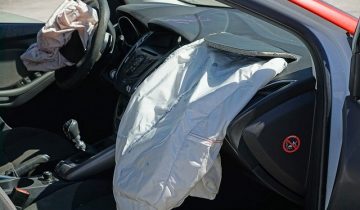When you purchase a car, one of the things you would look for today is an airbag module. According to the National Highway Traffic Safety Administration, frontal airbags save thousands of lives every year, and airbag technology prevents millions of serious injuries.
Though airbags are present in vehicles today, there could still be defects in their design or manufacturing, which causes them not to deploy when they are most needed. Unfortunately, the service airbag light might not always indicate if something is wrong with the module. Here are a few reasons why airbags will not release at impact.
The Type Of Collision That Occurred
The crash that occurred could be the reason why the airbags did not deploy. Airbag sensors could miss the impact, depending on where the car gets struck. There were reports of airbags not firing in rollover collisions or certain types of side or rear impact crashes.
The NHTSA says the impact location is a better indicator of whether an airbag should have deployed or not, instead of the extent of damage or vehicle speed. For example, in moderate to severe impacts to the front bumper or front corners of a vehicle, you can expect frontal airbag deployment.
The Airbag Sensors Weren’t Working
If the type of collision should have caused a deployment but didn’t, it might be that the sensors didn’t correctly detect the impact. A possible reason is that manufacturers did not design, test, or install the sensors correctly. Software or calibration errors could also cause this defect. It could also be that there were not enough airbag sensors to detect a crash. This situation often happens when a manufacturer wants to cut costs and places profits over safety.
There Were Faulty Electrical Parts
Aside from the lack of sensors, airbag failure could also be because of defects in wiring or the electrical components themselves. Faulty clock springs in the steering column can cause failures like these. You can see evidence of faulty wiring in collisions where some airbags deploy, but others do not. Secondhand vehicles might also need an airbag module reset since they might have figured in a crash previously.
There are also instances where the wiring is severed. Airbag failure can happen when manufacturers wire in unconventional ways. When producers route wires through areas that make them vulnerable, the impact is more likely to sever the wire during a crash. Manufacturers should install wiring in areas that correctly send collision signals from the impact site to the airbag module.
There Are Defects In The Modules Themselves
The airbag module itself could be what prevents the airbag from firing when it should. Some cases show that the impact signals properly flagged a collision and directed the module to deploy airbags, but there was no module response.
In this situation, there is an inherent design flaw or manufacturing defect. There could also be improper protocols in place at the manufacturing plant for quality control. In any case, it is the module design that prevented the bag from deployment.
Conclusion
Collisions are an unfortunate risk of operating vehicles. No matter how sure a person is of his driving skills, he still needs to prepare his vehicle for events like this. Ensuring that you have an airbag module is part of being a good vehicle owner. If your car had already been in a crash, or if it is a secondhand purchase, you need to ensure your system functions as it should.
Bring your car to Safety Restore for an airbag module reset. We are in Westfield, MA, and we are the world’s leader in post-accident restorations of seatbelts and airbag modules. Get in touch with us today for inquiries.


